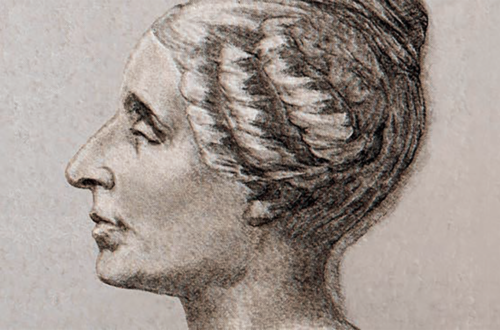Journal of the Mathematics Council of the Alberta Teachers’ Association
Volume 50 Issue 2, March 2013
The project of working on this special edition, which celebrates 50 years of delta-K, has been fascinating and enjoyable. For this issue, I have assembled a collection of articles that have appeared in delta-K throughout its history. This issue coincides with the publication of a celebratory book, so many articles included here overlap with those I considered for the book. 1 used the following criteria in choosing the articles. First, I collected and examined the tables of contents of all issues and looked for repeated themes. I noted curricular changes and related teaching and research ideas. Second, I looked for articles that represented a range of grades. Third, I focused primarily on authors from Alberta.
As a brief introduction to these articles, it is important to note the themes that were evident to me. Much of the 1960’s focused on modem math. Problem solving was introduced and geometry found a renewed place in the curriculum. Research, especially linked to the University of Alberta, formed much of the content. Technology use focused on the overhead projector, and computer programming was introduced. In the 1970’s, we saw a great deal of experimentation in both curriculum and pedagogical approaches. Lab approaches, math options, models for teaching with manipulatives and the use of calculators emerged alongside the introduction of the metric system. A focus on problem solving defined the 1980’s. Math applications, student projects and geometrical investigations through Logo programming were prominent. An attention to gender issues and a shift to constructivist learning theories took place. And … this is the decade that brought us achievement testing! Articles published in delta-Kin the 1990’s had a huge scope and variety. Topics included the use of manipulatives, math anxiety, communication, estimation, the use of calculators, gifted education, fractals, assessment, professional development, conics, data management, multiple intelligences and multiculturalism. In this decade, we became preoccupied with math processes, the Western Canadian Protocol and the National Council of Teachers of Mathematics Curriculum Standards. This variety of topics continued into the 2000’s as we became interested in graphing calculators, listening to children’s reasoning and formative assessment.
Throughout my study of the articles published in the past 50 years, I have been impressed with the dedication of teachers, math educators and mathematicians involved in the Math Council of the Alberta Teachers’ Association. Articles written for delta-K have reflected the viewpoints of many people interested in mathematics education in Alberta.
As we mark this milestone, I wish to convey my deep gratitude to previous editors of delta-K who made strong contributions to our history. In his editorial “Thirty-Four Years and Counting,” the late Art Jorgensen (1995) wrote:
“As we look forward to the next 30 years, what will MCATA’s future be? Will it grow and prosper and continue to be a voice to be heard, or will it wither and die? It is really up to the members. Today’s executive members, like those of the past years, will do their best. Then they will move on and pass the torch to you. Personally, I have a great deal of confidence in our members, and believe that MCATA has a bright future. Let’s make it so. (p 4)”
I believe he would be proud of the vibrancy of our community.
The last word in this issue of delta-K is given to Werner Liedtke, a teacher and math educator who has supported delta-K since its early days. Both Art and Werner have been inspirations to me as I continue the editorial work of this journal. I hope you enjoy this journey down memory lane.
Gladys Sterenberg
1 – 2
3
Gladys Sterenberg
4 – 5
Overview of Change – Or a Look at the Forest Before We Can’t See It for the Trees
EA Krider
6 – 7
William F Coulson
8 – 13
Marshall P Bye
14 – 17
A Constructivist Approach to Teaching Mathematics
Sol E Sigurdson
18 – 20
Mathematics and the Alberta High School Curriculum
John G Heuver
21 – 27
Klaus Puhlmann
28 – 35
Explanation and Discourse in 9th-Grade Mathematics Classes
Elaine Simmt, Florence Glanfield and Shannon Sookochoff
36 – 42
Perceptions of Problem Solving in Elementary Curriculum
Jennifer Holm
43 – 47
Assessing Young Children’s Attention to Pattern and Structure
Lynn McGarvey
48 – 49
Open Search in Elementary Mathematics Experiences
T P Atkinson
50 – 51
Introducing Contemporary Concepts in Traditional Arithmetic
James M Grasley
52 – 54
The Laboratory Approach in Mathematics – Calgary Junior High Schools
Bernice Andersen
55 – 57
Junior High School Math Option
Harry Topolnitsky
58 – 59
1.4 Kilograms of Hamburger and a Litre of Milk, Please
Dr S A Lindstedt
60 – 63
Of Students, Computers and Learning
Barry McGuire
64 – 70
Implementing Manipulatives in Mathematics Teaching
A Craig Loewen
71 – 79
A Collection of Connections for Junior High Western Canadian Protocol Mathematics
Sol E Sigurdson, Thomas E Kieren, Terri-Lynn McLeod and Brenda Healing
80 – 84
Getting Conversation into the Mathematics Classroom
Werner Liedtke
85



